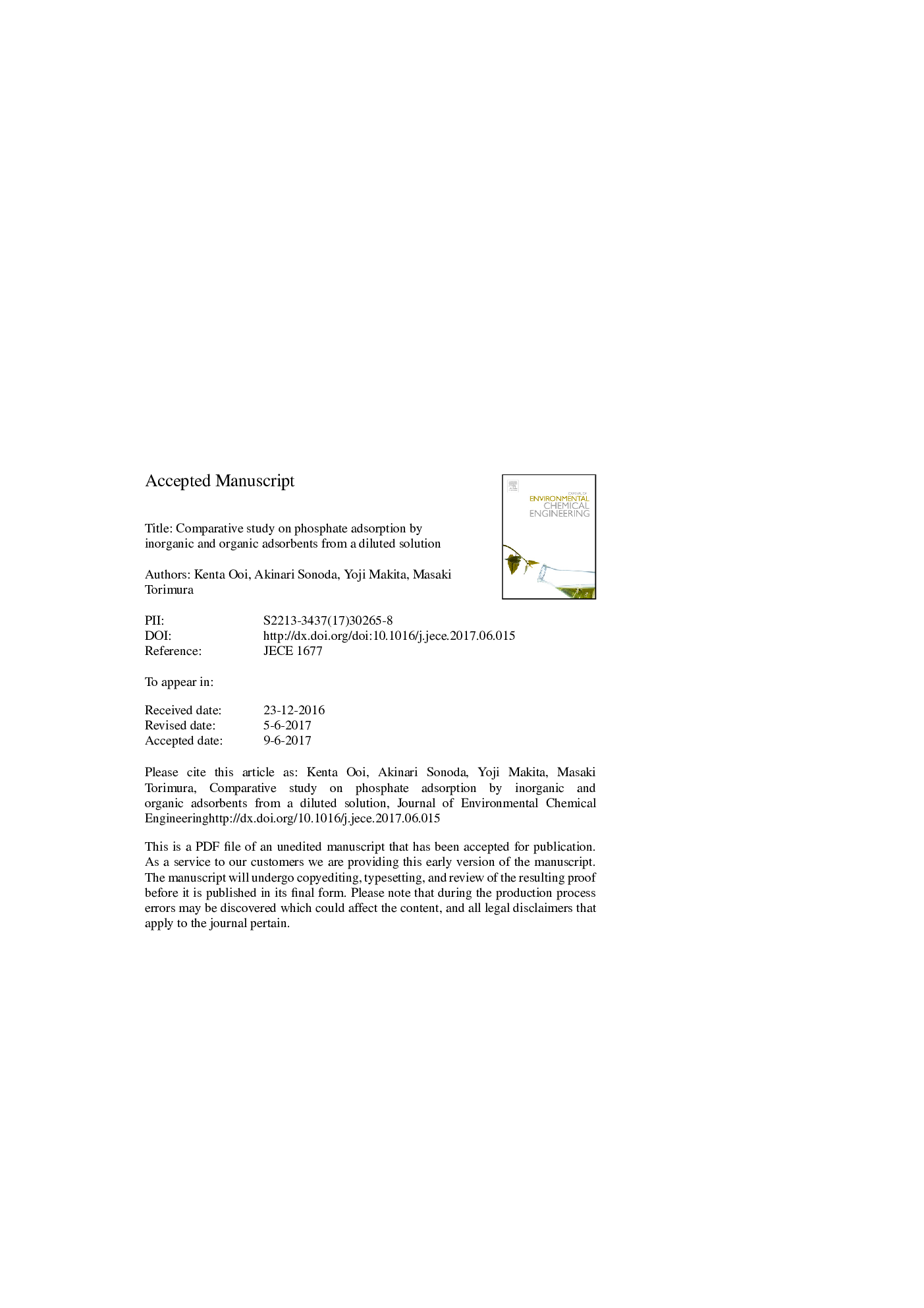| Article ID | Journal | Published Year | Pages | File Type |
|---|---|---|---|---|
| 4908674 | Journal of Environmental Chemical Engineering | 2017 | 37 Pages |
Abstract
Phosphate uptakes from a diluted NaH2PO4 solution (CP = 3 mg-P/L) were studied using 63 kinds of inorganic and organic adsorbents. Schwertmannite type hydrous iron oxide (Sch-1), Mg-Al type layered double hydroxide (MgAl-1), activated magnesium oxide (aMgO), Fe-Al type double hydroxide (FeAl-2), Ce2(CO3)3·8H2O, and La(OH)3 showed large phosphate uptakes above 20 mg-P/g. Sch-1 and MgAl-1 had high adsorption rates and large phosphate uptakes of 15 and 9 mg-P/g, respectively, even at CP = 0.01 mg-P/L. The influence of excess bicarbonate ion (2 mM NaHCO3) in the solution was small for the iron-containing adsorbents, while was marked for the other adsorbents. This difference could be partly explained by the difference in adsorption mechanism: ion exchange or dissolution-precipitation. The phosphate uptakes by different kinds of hydrous iron oxide showed that schwertmannite types had good phosphate adsorptivity independent of preparation method. Control of the state of sulfate ions in the adsorbent may be important for improving the phosphate adsorptivity by SO42â/phophate ion exchange. A future subject is to improve the reusability of adsorbent, since the 2nd adsorptions after phosphate desorption did not show satisfactory phosphate uptakes.
Related Topics
Physical Sciences and Engineering
Chemical Engineering
Chemical Engineering (General)
Authors
Kenta Ooi, Akinari Sonoda, Yoji Makita, Masaki Torimura,
